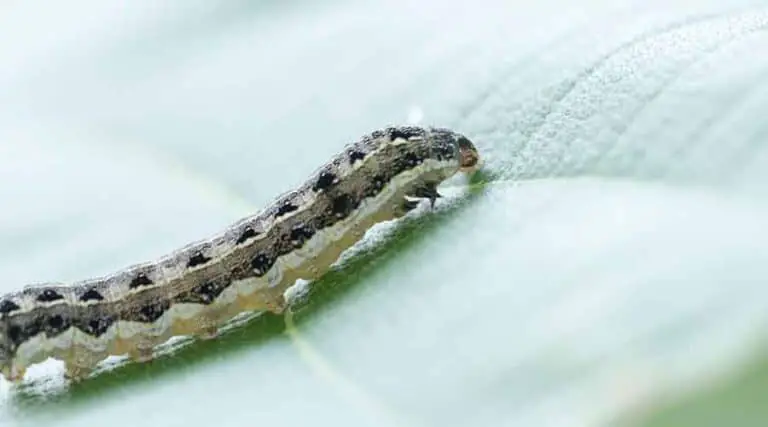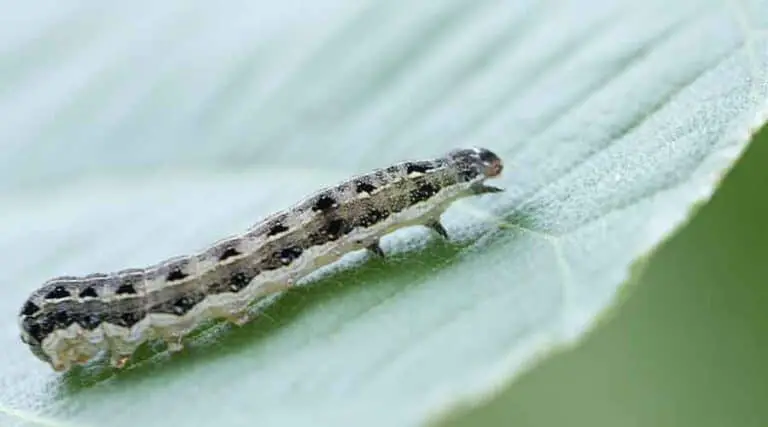What Do Cutworms Turn Into: Complete Metamorphosis Explained
Cutworms are a group of moth larvae that belong to the family Noctuidae. These caterpillars are notorious for their destructive feeding habits on a variety of plants, causing significant damage to crops and gardens. As nocturnal feeders, cutworms are usually hidden during the day and come out at night to feed on plant stems, often cutting them down to the ground level, which is how they got their name.
Throughout their development, cutworms go through several stages, including the larval, pupal, and adult stages. After completing the larval stage by feeding on plants, cutworms enter the pupal stage, where they transform within a protective cocoon. This metamorphosis is crucial as it prepares them for their final transition into adult moths.
Once they emerge as adult moths, their primary objective is to mate and reproduce, ensuring the continuation of their species. Although these moths are not as destructive as their larval counterparts, it is essential to be aware of their life cycle to implement effective pest control methods and prevent future infestations from occurring.
Life Cycle of Cutworms
Cutworms are a group of insects belonging to the Noctuidae family. These pests can cause severe damage to a variety of crops and plants. Understanding their life cycle is crucial for implementing effective control measures. The following sub-sections break down the four primary stages in the life cycle of cutworms: eggs, larvae, pupae, and adult moths.
Eggs
Cutworm moths lay their eggs on a variety of plants or surface debris like leaf litter. Depending on the species, a female cutworm moth can lay anywhere from 100 to over 1,000 eggs throughout her lifetime. The eggs usually hatch within 5-10 days, but the duration can be influenced by factors like temperature and humidity. Once they hatch, the young caterpillars emerge and the larval stage begins.
Larvae
The larvae stage is the most destructive phase in the cutworm’s life cycle. Cutworm larvae feed on plants, causing significant damage to crops. They are nocturnal and can often be found curled up under soil or debris during the day. The larval stage consists of several instars (growth periods) and can last between 20 and 45 days, depending on the species and environmental conditions.
- First instar: Freshly hatched larvae are small and white.
- Second instar: The size of the larvae increases, and they start developing pigmentation.
- Third to sixth instar: Larvae continue to grow and develop distinct markings that are characteristic of each species.
Pupae
Once the larvae have completed their instars, they move on to the pupal stage, where they undergo metamorphosis and transform into adult moths. Cutworms typically pupate underground or within plant debris. This stage can last between 2-4 weeks, depending on the species and environmental factors such as temperature and humidity.
Adult Moths
As adult moths, cutworms emerge from their pupae, having fully transitioned from their larval forms. The adult moths are typically active at night and known for their rapid flight patterns. Adult cutworm moths feed on plant nectar and lay eggs on host plants or nearby debris to start the life cycle again. The adult stage of a cutworm’s life cycle can vary in duration, but generally lasts between 2-4 weeks before the moth dies.

Identifying Cutworms and Damage
Physical Characteristics
Cutworms are the larval stage of moths belonging to the family Noctuidae. They have soft, cylindrical bodies that can vary in color from brown to gray or even green, depending on the species. Most cutworms measure about 1-2 inches in length and have hair-like structures along their body called setae. When disturbed, they tend to curl up into a ‘C’ shape, which is a distinctive trait that can help in their identification.
Signs of Infestation
- Damaged seedlings: One of the primary signs of cutworm infestation is the presence of damaged or severed plant seedlings. Cutworms feed on the stems of young plants at night, often cutting them off at the soil level.
- Wilting plants: Plants that have been attacked by cutworms may exhibit wilting or discoloration as they struggle to recover from the damage.
- Presence of larvae: Cutworm larvae can often be found in the soil near affected plants or curled up on the ground, hiding during daylight hours.
- Chewed leaves and foliage: In some cases, cutworms may also feed on the leaves and foliage of plants, which can result in irregular holes or notches on the edges of leaves.
Monitoring plants in your garden or field can help detect cutworm infestations early. Examine seedlings for signs of stem damage, and check the soil around wilting plants for evidence of cutworm larvae. Scouting for egg masses and larvae on refuge areas near plants is important for determining damage potential, as mentioned in an academic article.
Implementing early detection and control measures can minimize cutworm damage and protect your plants from severe infestations. With a good understanding of cutworms’ physical characteristics and the signs of infestation, you can effectively manage these pests in your garden or field.
Common Cutworm Species
Cutworms are the larval stage of various species of moths belonging to the Noctuidae family. They are known for their destructive feeding habits, as they often feed on a wide range of crops such as fruits, vegetables, and grains. Here, we explore some of the most common cutworm species and their specific characteristics.
Black Cutworm (Agrotis ipsilon)
The Black Cutworm is one of the most common and widely distributed cutworm species. It has a grayish-black body with two lighter stripes running along its length. They primarily feed on corn, cotton, and tobacco plants, but can also affect other crops.
Key features of the Black Cutworm:
- Grayish-black body with light stripes
- Feeds on various crops like corn, cotton, and tobacco
Army Cutworm (Euxoa auxiliaris)
The Army Cutworm is another common species that has a similar appearance to the Black Cutworm. It gets its name from the large numbers that can infest a field, resembling an army of worms. They primarily feed on wheat and alfalfa, but can also attack other crops.
Main characteristics of the Army Cutworm include:
- Similar appearance to Black Cutworm
- Feeds on wheat and alfalfa plants
Variegated Cutworm (Peridroma saucia)
The Variegated Cutworm has a brown body with a distinguished row of white to yellow spots running down its back. They primarily feed on potato plants, but can also feed on lettuce, tomato, and various other crops.
Key features of the Variegated Cutworm:
- Brown body with white to yellow spots
- Feeds on potato, lettuce, and tomato plants
Glassy Cutworm (Crymodes devastator)
The Glassy Cutworm has a smooth, shiny appearance, which resembles glass. They are found in grasslands and feed on grass and grain crops such as wheat, barley, and oats.
Distinctive traits of the Glassy Cutworm:
- Shiny, smooth appearance
- Feeds on grass and grain crops like wheat, barley, and oats
These cutworm species can vary in their food preferences and specific attributes, but all of them pose a threat to crops, making it crucial for farmers to take preventive and control measures, to minimize their impact on crop yields.
Natural Enemies and Biological Control
Cutworms, particularly the black cutworm (Agrotis ipsilon), are common pests in agriculture and turfgrass. Their life cycle includes stages as eggs, larvae, pupae, and adult moths. The larvae are particularly damaging as they feed on plant stems and roots, causing significant crop damage. One way to manage cutworms is through conservation biological control, which involves promoting the presence of natural enemies in the environment.
Predatory insects and other arthropods are considered natural enemies of cutworms. These organisms can help regulate cutworm populations by preying on their eggs, larvae, or even adult moths. Some of these natural enemies include:
- Ground beetles
- Rove beetles
- Predatory mites
- Spiders
- Parasitic wasps
Implementing methods to support these natural enemies can lead to more sustainable and effective cutworm management. For example, providing habitat resources, such as floral nectar sources and shelter, can enhance the presence and diversity of beneficial arthropods in the area.
In some cases, the presence of alternative food sources for omnivorous predators can influence their hunting behavior and contribute to herbivore suppression. A study found that increased availability of plant resources resulted in a shift in omnivore preference towards feeding on cutworms.
Another factor in promoting natural enemies and conserving biological control is the maintenance of suitable habitats. In lawn turf, for instance, adjusting the mowing height has been shown to affect the populations of natural enemies and cutworm control. Lower mowing heights were found to support increased predator abundance, leading to better pest suppression.
Overall, understanding and optimizing the relationships between cutworms, their natural enemies, and the environment is crucial for effective and sustainable management of this agricultural pest.

Prevention and Management Strategies
Cultural Practices
To prevent and manage cutworm infestations, several cultural practices can be employed:
- Crop rotation: Rotate crops to hinder the buildup of cutworm populations.
- Field sanitation: Remove weeds and plant debris that can serve as habitat and food sources for cutworms.
- Tillage: Regular tillage can expose cutworm larvae and pupae to natural enemies and environmental factors.
- Timely planting: Plant crops early to avoid peak cutworm activities.
- Monitoring: Keep an eye on cutworm presence and densities, and apply controls when necessary.
Chemical Control
Using chemical control methods can also help in managing cutworm populations. However, consider the following factors before application:
- Use Integrated Pest Management (IPM) strategies: Combine chemical control with other tactics to minimize the reliance on chemicals and reduce the risk of resistance development in cutworms. A study mentions the importance of IPM practices in managing pests like cutworms.
- Apply insecticides when needed: Use insecticides only when cutworm densities reach damaging levels to avoid harming beneficial organisms.
- Choose the right insecticide: Select insecticides that are effective against cutworms, and rotate them to avoid resistance buildup.
- Follow label directions: Apply insecticides according to the label instructions to maximize efficacy and minimize harmful side effects.
- Timing: Apply insecticides during the early evening or at night when cutworms are most active.
Through the proper implementation of cultural practices and judicious use of chemical controls, cutworm infestations can be effectively managed, protecting crops and maintaining yield potential.
Conclusion
Cutworms are the larval stage of various species of nocturnal moths belonging to the family Noctuidae. Adult moths emerge from the pupal stage after the cutworms have undergone a complete metamorphosis. The adult moths are primarily pollinators, contributing to the fertilization of flowering plants.
The larval stage, or the cutworm stage, is considered a significant agricultural pest, as these larvae feed on various crops, causing substantial economic losses. Some common species include the black cutworm, Agrotis ipsilon, and the variegated cutworm, Peridroma saucia. Effective management strategies against these pests involve the use of insecticides, biocontrol agents, and decision-making support systems to reduce their impact on agricultural yields.
Some insecticides have been found to be effective against cutworms, such as chlorfluazuron and flufenoxuron, which interfere with the vitellogenesis of A. ipsilon. Field persistence studies have also shown that indoxacarb can significantly reduce the black cutworm population. However, it is essential to use these insecticides in a targeted and sustainable manner to minimize their potential side effects on other organisms and the environment.
Overall, understanding the life cycle of cutworms and their transformation into adult moths provides valuable insights that can aid in devising effective control measures. This knowledge is crucial for managing these pests in a way that minimizes their impact on agriculture and the environment.






